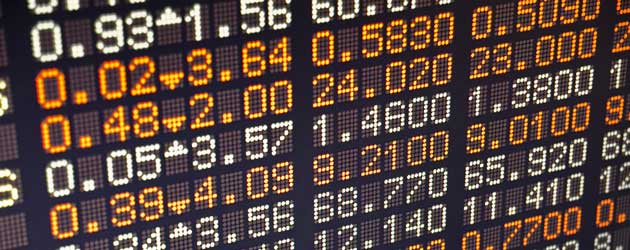
Pound Sterling (GBP)
The Pound exchange rate gained against the Euro and a number of other peers on Wednesday after a report released by the Confederation of British Industry (CBI) showed that retailers are feeling their most optimistic since 2002.
The British Chambers of Commerce also revised its growth forecasts higher and said that unemployment will likely drop below 6% before the end of the year. Mounting concerns over an escalation in the Ukraine crisis also offered some support.
Looking to Friday’s session, the GBP could make further gains against the single currency if the latest GfK consumer confidence data comes in positively and if Eurozone data shows further weakness in the currency bloc.
Euro (EUR)
The Euro declined against the Pound and slipped closer to an 11-month low against the US Dollar after preliminary data showed that consumer price inflation in Germany was stagnating in August, matching economist expectations.
The report followed on from a report released earlier in the session which showed that the number of Germans out of work increased by 2,000 last month, defying forecasts for a fall of 5,000. Consumer confidence across the wider Eurozone also came in below expectations.
The Euro is forecast to fall further in Friday’s session as the latest Eurozone inflation data is likely to show a further decline, which in turn will increase pressure on the European Central Bank to introduce new monetary easing measures at next week’s policy meeting. The escalating crisis in Ukraine is also likely to continue to weigh heavily.
US Dollar (USD)
The US Dollar continues to strengthen against its major peers as data released on Thursday confirmed the view that the world’s largest economy is gaining in strength.
Upbeat GDP estimate and jobless claims data both increased speculation that the Federal Reserve could loosen its monetary policy sooner than initially expected. The ‘Greenback’ was also finding support from increased demand for safe haven assets after Ukraine accused Russia of invading its territory. Friday’s personal spending data is also forecast to support the currency.
Australian Dollar (AUD)
The ‘Aussie’ continued to trade higher against its major peers despite the release of positive US data and reduced demand for riskier assets. The currency was holding ground after Capital expenditure data released by the Australian Bureau of Statistics showed June-quarter capital expenditure rose 1.1% from the previous three months, beating the market expectation of a 0.9% contraction.
Swiss Franc (CHF)
The Swiss Franc strengthened further against the Euro to advance to its best level in 21 months on Wednesday increasing pressure on the Swiss National Bank to intervene for the first time in two years to defend the 1.20 cap of the currency.
Official data on Thursday showed that the number of employed people rose to 4,200 million in the last quarter, from 4,192 million in the three months to April. Analysts had expected the number of employed people to rise to 4,210 million in the second quarter.
With demand for safe haven currencies rising because of concerns over increased tensions in Ukraine the Franc looks set to remain supported throughout Friday’s session.
Japanese Yen (JPY)
The Japanese Yen made gains against most of its major peers as increased tensions between Ukraine and Russia increased demand for the safe haven asset.
The Yen is forecast to remain supported if the increasing tensions in the troubled region of eastern Ukraine escalate further. Ukraine’s President accused Russia of a direct invasion of his country and pleaded with the EU and USA for support.
Canadian Dollar (CAD)
The Canadian Dollar remained supported against the Pound and other peers on Thursday as it continued to see support from the major corporate deal between Burger King and the Tim Horton’s restaurant chain. The ‘Loonie’ is forecast to make firmer gains in Friday’s session if the sessions Canadian GDP data comes in positively. Economists are expecting GDP to expanded from 0.3% to 0.4%.


Comments are closed.